General description
Floor lamps are versatile light fixtures to capitalize on when layering light to maximize the livability and functionality of an interior space. Lighting design is more than addressing the basic visual needs of people. The intensity, composition and distribution of light can affect people on both emotional and biological levels. Therefore, lighting design can be considered as the art of using light to enable vision, enhance visual perception, foster appealing atmospheres, create positive impressions, provide new perspectives, design emotionally stimulating environments, and contribute to regulation of the circadian rhythms. These goals need to be accomplished through a layered approach which composes the lighting itself in layers. A mix of ambient, task and accent lighting creates a more usable, comfortable and inviting environment. Floor lamps are all-rounders. They can be designed to provide task, ambient or accent lighting. These free-standing lights allow for flexibility in providing illuminance as they can be easily repositioned to where they are needed most.
What is ambient lighting
Ambient lighting is the base layer of lighting. It should deliver a comfortable level of light to provide a space with overall illumination that helps the safe navigation of people throughout a space and allows them to perform general activities. Ambient lighting is also the source that sets the mood of the space and establishes the overall impression people have on the space. In general, ambient lighting is provided by ceiling fixtures such as pendants, chandeliers and flush mount ceiling lights. Nevertheless, the trend of using floor lamps to provide ambient lighting has been riding high for the past couple of years. The influence of overhead lighting from a centerpiece may be weak in larger living rooms. A floor lamp is then used to brighten a lost corner.
Not every occasion requires ambient lighting that radiates throughout the room. Localized ambient lighting is more conducive to a mental state of tranquility and a feeling of inconspicuousness when it is late at night. Every nook and corner of a space—be it a living room, a bedroom, home office, or a guest room—can be a retreat from the chaos of the outside world when bathed in a pleasing, understated ambiance. A lighting scheme that can’t be adjusted for a particular location is inherently devoid of adaptability and flexibility. The addition of a floor lamp allows the ambient layer of light to be flexibly adapted to user needs and preferences.
How floor lamps supply ambient light
Floor lamps supply ambient light through two types of light distribution. A general diffuse system has the typical configuration of floorstanding ambient light. It employs a translucent shade, an opal diffuser or etched glass to allow adequate light coming out toward near horizontal directions or in an omni-directional pattern. Diffuse light distribution is generally perceived as “soft” when the white light is tuned to a warm tone. To avoid discomfort glare due to excessively high brightness in relation to the state of adaptation, luminances of the light emitting surface at viewing angles should not exceed 8,000 Cd/m2. An indirect system is another type of ambient light which directs 90 to 100 percent of its light to the ceiling, where it becomes diffused and is reflected back over the room. Floor lamps that produce indirect ambience are commonly known as torchieres. The light source of a torchiere must be shielded to ensure no direct view of the exposed light source from any seated or standing position within the room. Indirect lighting enables a high uniformity illumination with reduced shadowing and glare, but it’s essential that the ceiling surface has high reflectance and there is a sufficient distance between the light source and the ceiling.
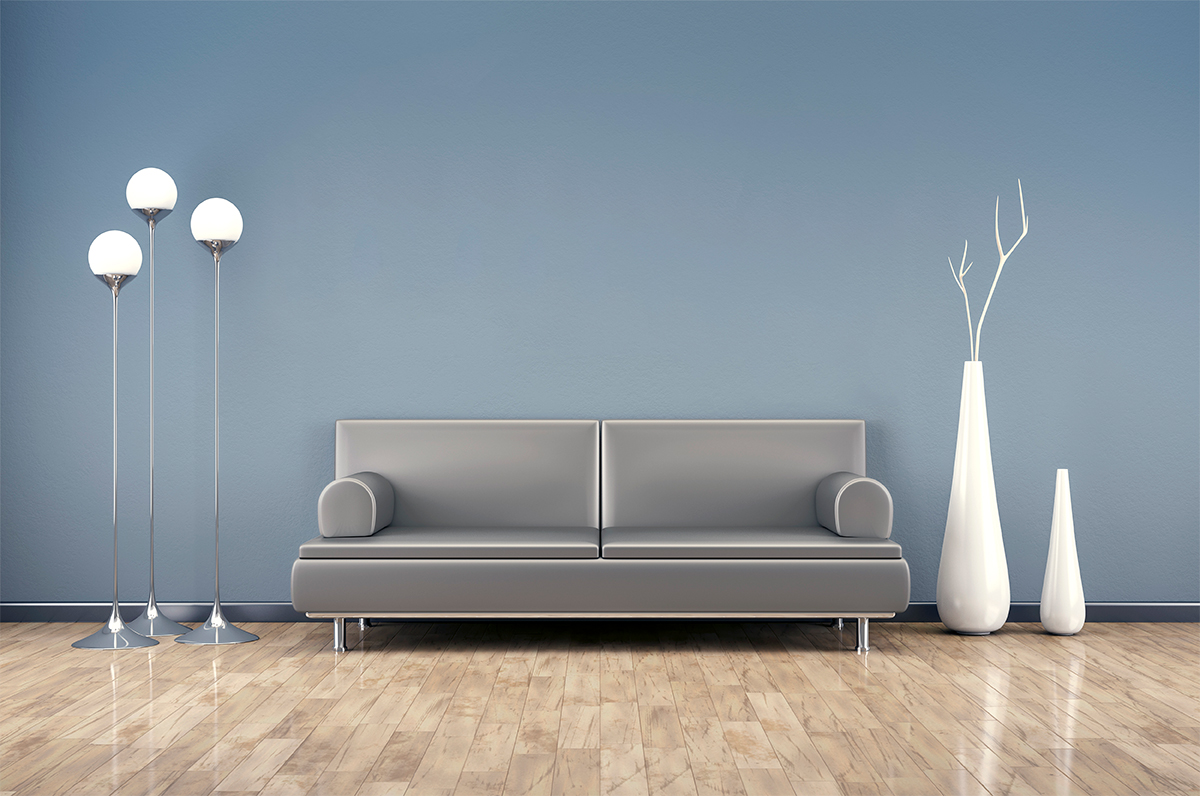
Adds drama to a room with floorstanding accent lights
As ambient lighting is designed to provide uniform, diffuse lighting and a central chandelier, pendant or ceiling light is the common choice for the source of ambient light, a room with no other layers of light but just ambient lighting tends to take on a dull, flat effect. Light is a medium that interprets the world around us. Quality lighting design can inspire a range of responses in humans by creating visual hierarchies and visual interests to add drama and excitement to a room. The accent layer of light is used to provide visual cues for attracting and guiding attention.
Accent lighting provides the focal point and reinforces design aesthetics to transform a space from ordinary to extraordinary. A floorstanding accent light is similar to a torchiere except that it shines a controlled beam of light onto a wall. It highlights or spotlights a point of interest to enhance its prominence and attractiveness against the background of the general illuminance. The concentrated beam of light creates a dramatic emphasis on shapes, textures, finishes and colors of an art piece. To make the point of interest stand out and create maximum visual impact, accent lighting should be at least three times brighter than the background layer of ambient light.
Design style
Floor lamps perform an essential function in creating an effective visual environment but the decorative nature of a light fixture as a furniture piece needs to be appreciated as well. Deliberate consideration should be given to the look or style of the light fixture and its impact on the decor theme of the room itself. To keep the decor theme going, some light fixtures should make a significant design statement while others should never be the focal points. A decorative floor lamp can add a conversation piece to a minimalistically themed room. However, improperly standing out from its surroundings in aesthetics will distract the overall look and feel of a room from the artistry of the application.
Floor lamps are available in a wide variety of styling choices. Clean lines, minimal decoration, simple shapes and tremendous innovation in visual effects are hallmarks of contemporary design. Modern design remains minimal decoration but is usually fixed around squared, graphic lines and more simple and united in look. Traditional style floor lamps are elegant in an old-world sense. Transitional design tones down traditional elements to offer a contemporary take on an old classic. The industrial style draws influence from the raw and rugged elements of warehouse design. An extensive selection of other designs and styles such as glam, farmhouse, Mediterranean, bohemian, Tiffany, mission and art deco can also bring a fresh approach to lighting any room.
Design composition
Floor lamps come in all sorts of types, shapes, sizes and colors, which add a variety of design options for complementing and enhancing the style and design of your home. Club lamps, tripod lamps, arc lamps and torchieres are the most popular and recognizable types of floor lamps that provide ambient lighting. Floor lamps may also be designed as multi-head lamps, tree lamps, lanterns, shelf lamps, or take on a novelty form. The shade is usually the focal point of a floor lamp and used to define the lamp style. It may be crafted in a drum, round, cylindrical, dome, bowl, come, bell, rectangular, square, empire, cage, oval, or hexagon shape. Ambient lighting is typically delivered using white, cream or beige shades. Translucent shades in other colors are used for atmospheric lighting applications. The shades aren’t the only part that can underscore the aesthetics of a floor.
The configuration, shape and finish of the step/pole structure need to coordinate with the design of lamp shades for a cohesive look. The lamp base, which should be sturdy enough to stand steadily on the floor, should be a design element as well that contributes to the personality of the floor lamp. From the base to the shade, all components should be properly scaled to complement the space. The light assembly drives the scale of everything else in the fixture. The most important attribute of scale is the fixture’s height. Ambient floor lamps are usually taller than floorstanding reading lamps and range in height anywhere from around 4 feet all the way to 6 feet or greater.
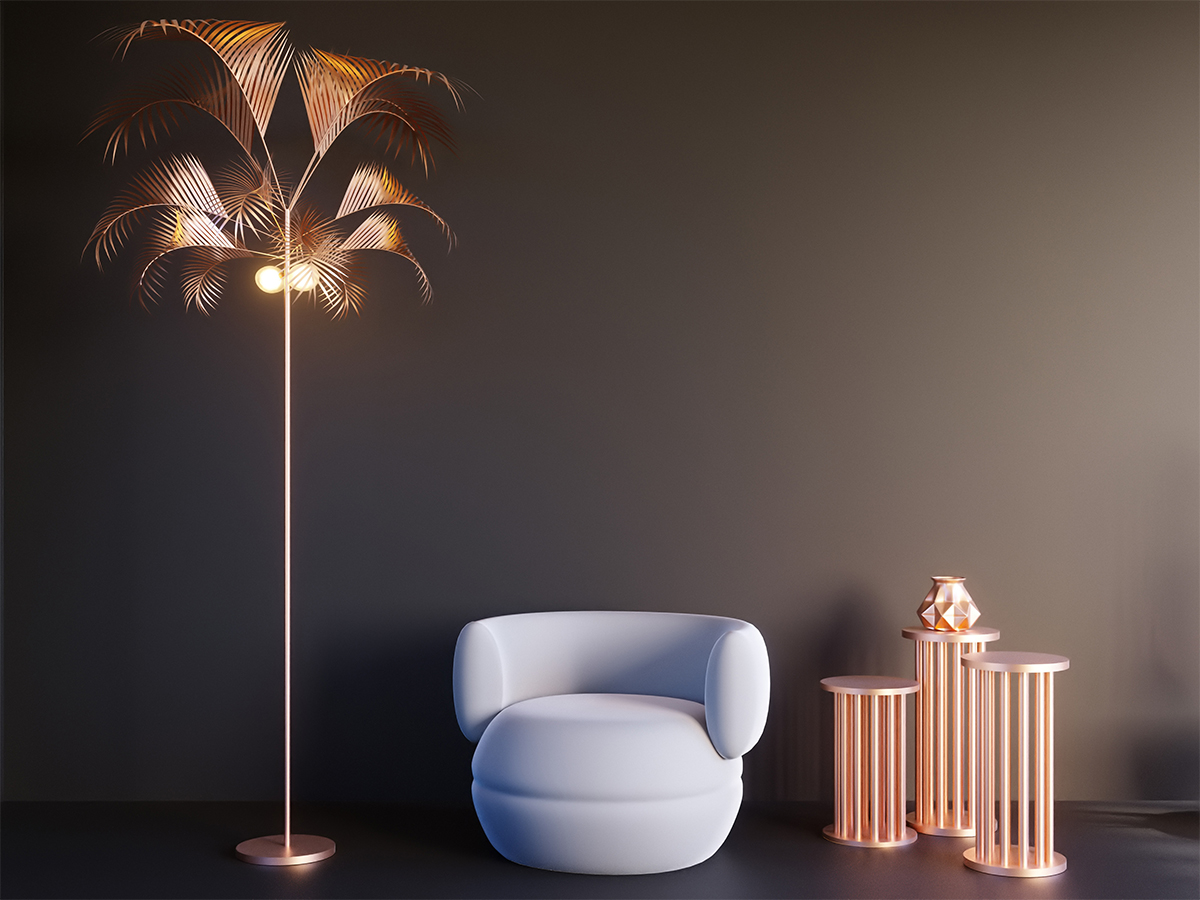
Lighting technology
The essentials of good lighting are conceived in the conversation between art and technology. Traditionally, a floor lamp is bulb-based fixture which holds an incandescent, halogen and compact fluorescent lamp in place and controls the distribution of emitted light using a large shade. While incandescent and other filament source lamps have been phased out of the market due to their high energy use and short lifespans, fluorescent lamps fared no better. The high efficacy of fluorescent lamps is achieved at the cost of rewarding us a light spectrum that is deficient in key wavelengths for rendering saturated colors. When the light source operates a low color temperature to replicate the warm glow of incandescent sources, its efficacy drops wildly. Fluorescent technology also raised the concern of light flicker due to the widespread use of low cost ballasts. Furthermore, it is inherently limited in controllability which is essential to implementation of sophisticated scenes for ambient and accent lighting.
At the heart of recent revolution in lighting technology is solid state lighting which uses p-n junction semiconductor devices to create visible light. LED technology delivers tremendous energy and maintenance savings, enables new lighting functionality beyond providing basic illumination, redefines lighting form factors, drives digital transformation in lighting control, and allows lighting systems to participate in the Internet of Things (IoT).
LED floor lamps
LED floor lamps generally refer to light fixtures that use LED packages, rather than LED retrofit lamps, as the light-producing components. Legacy form factors fail to address the operational needs of LEDs with regards to thermal management, power regulation and optical control. Moreover, they make it impossible to exploit the distinctive capabilities and design flexibility associated with LED technology. The small footprint and directional nature of LEDs enable unprecedented freedom in new lighting form factors, which not only contributes to high performance optical control but also allows for crafting light fixtures with exceptional architectural or decorative suitability.
Typically, the discrete LEDs are assembled on a metal-core PCB (MCPCB) to form a board module that is conducive to light distribution and thermal management. The LED module is then interfaced with a heat sink which dissipates heat generated at the junction of the diodes into the surrounding environment. The entire LED assembly is highly integrated to ensure a fusion of style and function. The LEDs are operated by a constant current LED driver which converts line-voltage AC power or low voltage battery power into a predetermined magnitude of DC power. An LED driver responds to the fluctuations in the incoming AC/DC power as well as the changing needs of the LED to maintain consistent delivery of the desired lumen output. In many applications, the LED driver needs to interpret control signals to dim or turn on/off the connected LEDs.
Quality of light
Achieving quality lighting involves more than simply delivering the required quantity of light. Drive current regulation must account for removal of large ripples in the output current provided to the LED load, making sure that the LEDs will not flicker. Optical regulation characterizes the luminous quality of a floor lamp. It should ensure that all luminances contribute favorably to the visual environment. The color quality of a light source is evaluated by its color temperature and a color rendering metric which are inherently determined by the spectral power distribution (SPD). For a space to have a pleasant look and for colors of all objects in the field of view to appear natural, the spectrum of the LEDs must be balanced in exact proportions. A source with a color rendering index (CRI) of 90 provides a much more pleasing color perception than one with a value of 80.
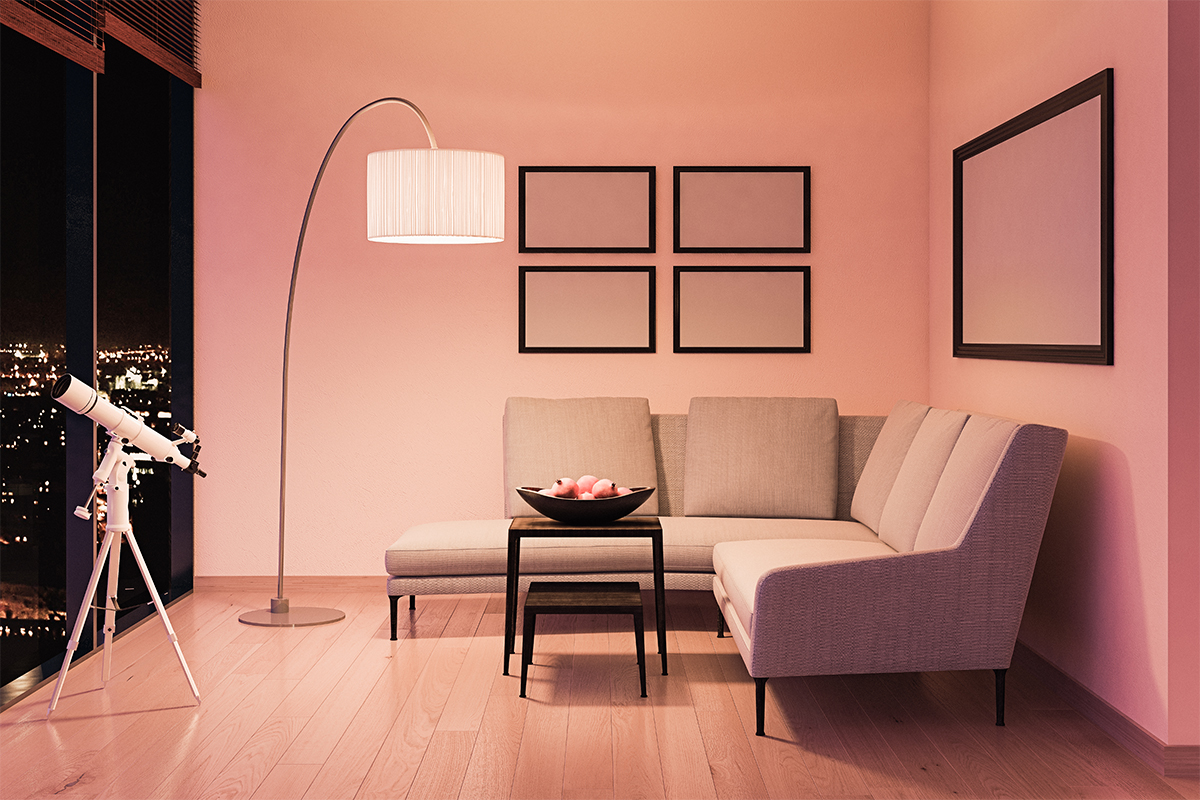
The power of color
The color characteristics of LEDs influence vision and visibility, and simultaneously it inspires various physiological and psychological responses in humans. Interior lighting in homes and hotels is generally biased toward the long-wavelength part of the visible spectrum. A light spectrum with greater power in the longer wavelengths gives the light a warmer tone. Heavily laden with red and orange wavelengths, the warm glow from a floor lamp is reminiscent of the sunset, flame, or a traditional incandescent source. The use of warm white light, which exhibits a correlated color temperature (CCT) around 3000K, helps create an inviting and intimate environment. Higher the color temperature, higher the content of blue energy in the emitted light and its color becomes cooler. While blue-enriched light has an activating impact that enhances concentration and alertness, it may impede nocturnal melatonin production and lead to negative consequences on our health and wellbeing. The perception of color is how the human visual system discriminates between spectral reflectances at various wavelengths.
Dynamic lighting
Since LEDs can be spectrally engineered at the package-level to emit almost any spectrum of visible light, an LED floor lamp can be designed to produce white light at any desired CCT and with the highest possible color rendering performance. The full, instantaneous dimmability of LEDs lends them perfectly to color mixing applications in which several base color LEDs are individually controlled to produce variable colors and intensities. An LED floor lamp with dynamic lighting capability can be a tunable white system, a dim-to-warm system, or a full-color tuning system.
The popularity of tunable white lighting systems has been driven by the human centric lighting (HCL) concept which is intended to make use of the biological impact of light. Tunable white lighting provides the ability to change the color of light from very warm white light to daylight white light while also allowing independent control of light intensity. Dim-to-warm lighting mimics the behavior of incandescent lamps of which the color temperature drops in proportion to the reduction in intensity. Full-color tuning floor lamps are RGB systems and may incorporate additional channels of amber or white LEDs. They can produce any desired color across the visible spectrum to fine tune a particular static color or create color-changing sequences.

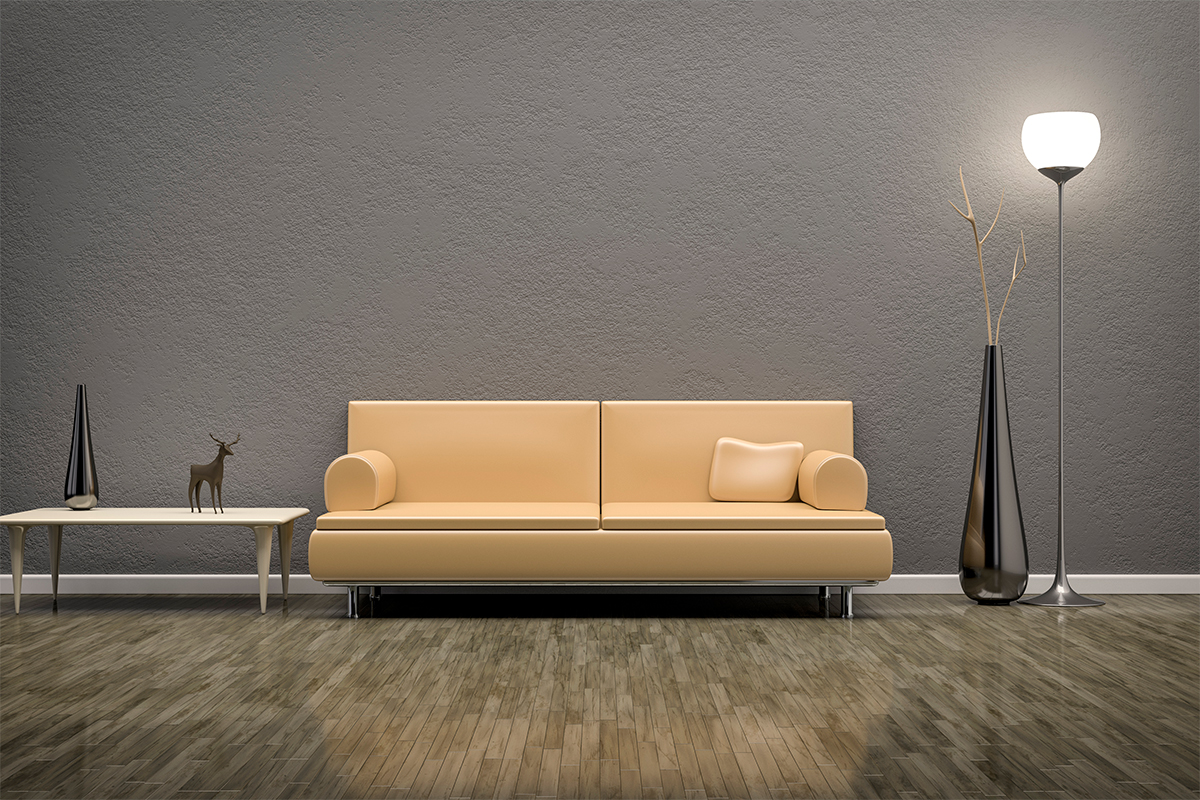
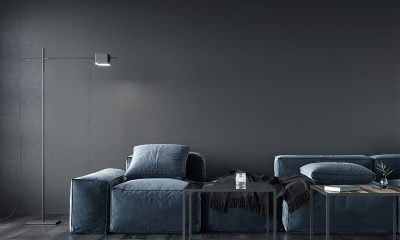
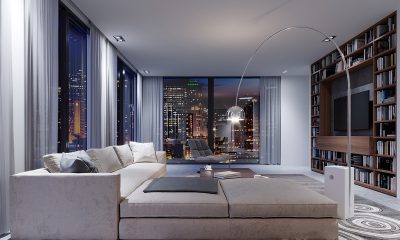





Loading...